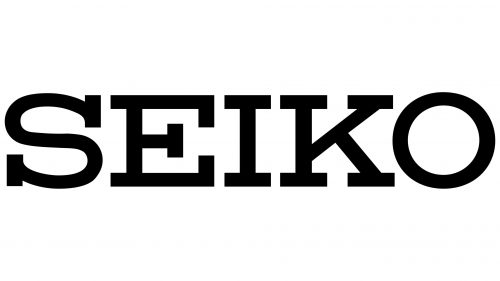The Seiko logo embodies a harmonious blend of simplicity and strength, highlighting the brand’s key qualities. This symbol conveys the company’s leadership in the watch industry, where it has earned recognition for its innovations, reliability, and impeccable precision. The minimalist approach in the design of the visual mark underscores the brand’s confidence and determination, emphasizing its products’ durability and unparalleled quality.
Every detail reflects a high level of craftsmanship and commitment to tradition while maintaining a focus on modern technologies and a constant pursuit of excellence. The clean lines in the emblem also represent the philosophy—aiming to create products that exceed the expectations of their owners and remain reliable companions for many years.
Seiko: Brand overview
Seiko’s history began in 1881 when 22-year-old Kintaro Hattori opened a small shop for watch and jewelry repair and sales in Tokyo’s Ginza district. Hattori quickly earned a reputation as a reliable and skilled craftsman, which helped him grow his business.
In 1892, Hattori began manufacturing watches under the name Seikosha, meaning “house of precision.” While the company initially focused on wall clocks, Hattori’s ambitions extended far beyond that.
The company introduced its first pocket watch, the Timekeeper, in 1895. This watch was notable for being designed and manufactured entirely in Japan when most timepieces were imported from abroad.
The business expanded rapidly in the early 20th century. In 1913, the Laurel, Japan’s first wristwatch, was launched.
The Great Kanto Earthquake of 1923 destroyed the factory and much of Tokyo, putting the company to the test. Despite this setback, Hattori resumed production quickly. In 1924, the first watches under the Seiko brand were released, a name that would eventually become synonymous with the company.
The 1930s brought significant technological advancements. In 1934, the company introduced its first wristwatch with a shock-resistant mechanism. The Seiko 54 caliber, launched in 1936, became the foundation for many of the company’s future developments.
Like many Japanese businesses, the company shifted its focus to meeting military demands during World War II. After the war, production returned to civilian watches.
The 1950s and 1960s were periods of rapid growth and innovation. 1956, the brand introduced its first automatic watch, featuring the Diashock mechanism. 1959, the company unveiled the Crystal Chronometer QC-951, the world’s first quartz chronometer.
In 1964, the brand was chosen as the official timekeeper for the Tokyo Olympic Games, solidifying its position as a leader in accurate timekeeping.
A breakthrough came in 1969 when the company launched the Astron, the world’s first quartz wristwatch. This watch revolutionized the industry by offering unmatched accuracy compared to mechanical watches and igniting the “quartz revolution.”
Innovation continued through the 1970s. 1973, the company introduced the world’s first digital quartz watch with an LCD. The 1975 release of the Professional Diver 600m set a new standard for diving watches.
The company pushed its technological boundaries in the 1980s. In 1982, it launched Kinetic technology, combining the best features of quartz and mechanical watches. The brand also introduced the world’s first wristwatch with GPS synchronization in 1988.
In the 1990s, the brand expanded its offerings. The Credor line, established in 1992, focused on high-end timepieces. In 1999, the company introduced Spring Drive technology, which combined quartz accuracy with mechanical power.
The 21st century continued the tradition of innovation. 2005, the company launched the world’s first wristwatch with an e-paper display. 2012, the brand introduced the Astron GPS Solar, the world’s first GPS solar-powered watch.
A major milestone came in 2017 when the company opened its first Grand Seiko boutique outside Japan in Beverly Hills, California. This marked an important step in the brand’s growth in the luxury market. In 2019, the company celebrated the 50th anniversary of the Astron with a special edition model.
By 2023, the brand remained one of the world’s leading watchmakers, known for its wide range of products, from high-tech luxury models like Grand Seiko to affordable quartz watches.
The company’s history is marked by continuous innovation and a dedication to excellence in watchmaking. From its origins as a small Tokyo shop, the brand has grown into a globally recognized name, known for creating timepieces that embody Japanese craftsmanship and technological expertise.
Meaning and History
What is Seiko?
This is a Japanese watch giant that has influenced the global watch industry. The brand is known for its vertically integrated production process, which includes creating all watch components in-house and complex elements like electronic circuits and mainsprings. This independence has allowed the brand to pioneer innovation, introducing revolutionary technologies like quartz movements, kinetic watches, and the unique Spring Drive mechanism. Under its sub-brands, the company offers a diverse range, from elite luxury models to affordable everyday watches. The brand is popular among divers thanks to its iconic models, the Tuna and Monster series, which are highly valued for their durability and functionality.
1959 – today
The Seiko logo has remained true to its concise and meaningful design over the years, consisting solely of the brand name. This approach emphasizes its recognizability and significant place in the industry. In Japanese, the word “Seiko” translates to “exquisite,” “refined,” and “precision” — key qualities the brand has infused into its products. Since adopting this name in 1924, it has become a symbol of the company’s entire product line.
The font features bold, clear letters with straight edges and precise, sharp serifs. This design choice highlights the brand’s reliability and strength, symbolizing the watches’ durability and high quality. The clean, straight lines of the font emphasize the company’s rigorous and systematic approach to assembling its mechanisms, reflecting flawless precision and attention to the smallest details.
The logo lacks unnecessary elements and decorative embellishments, making it as simple as possible while still being memorable. This solution’s minimalism directs focus to the company name and its reputation. The emblem underscores the brand’s confidence that its watches can demonstrate high quality and stand the test of time, maintaining relevance and reliability for years.





